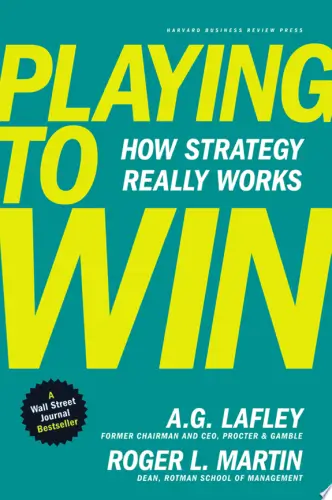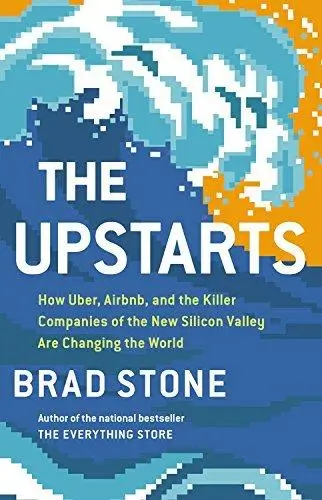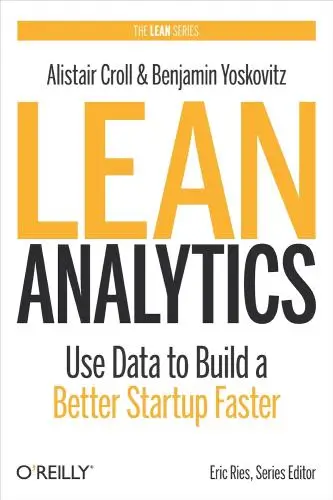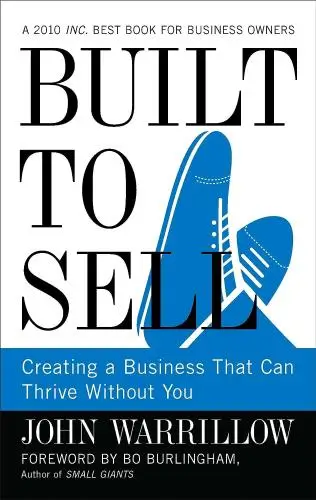
The $100 Startup
Reinvent the Way You Make a Living, Do What You Love, and Create a New Future
What's it about?
The $100 Startup is a practical guide for aspiring entrepreneurs looking to start a business with minimal investment. Guillebeau shares inspiring stories of individuals who turned their passion into profitable ventures, emphasizing the importance of creativity and resourcefulness. The book offers valuable advice on identifying profitable ideas, launching a successful business, and achieving financial independence. With actionable tips and real-life examples, this book is a must-read for anyone dreaming of starting their own business on a budget.
About the Author
Chris Guillebeau is a bestselling author known for his practical advice on unconventional living and entrepreneurship. His book "The $100 Startup" inspires readers to turn their passions into profitable ventures, while "Side Hustle" offers step-by-step guidance on starting a successful side business. Guillebeau's writing style is engaging and motivating, offering unique perspectives on achieving personal and professional success. He encourages readers to think outside the box and take control of their own destinies.
10 Key Ideas of The $100 Startup
Identify Your Passion and Skills to Create a Unique Value Proposition
Combining what you love doing with what you are good at creates a unique value proposition.
This intersection is where you can find a business idea that not only has market demand but also keeps you motivated.
By focusing on your strengths and interests, you can offer services or products that stand out because of your genuine passion and expertise.
This approach ensures that your business reflects a part of who you are, making it more authentic and appealing to potential customers.
Learn DeeperReflect on Your Passions and Skills: Take some time to jot down what you love doing and what you're good at. This could be anything from writing, designing, coding, teaching, or even cooking. Don't limit yourself; the goal is to identify areas where you feel both passionate and competent.
Research Market Demand: Once you have a list of your passions and skills, research to see if there's a demand for what you can offer. Use tools like Google Trends, social media, and forums related to your interests to gauge interest and identify potential gaps in the market.
Create a Unique Value Proposition (UVP): Based on your findings, craft a UVP that combines your passion and skills in a way that meets market demand. This should clearly articulate why someone should choose your product or service over others.
Test Your Idea: Before fully committing, test your business idea with a small, manageable project or offering. This could be a mini-course, a limited product run, or a series of workshops. Gather feedback from these initial offerings to refine your approach.
Build and Launch: With your refined idea, start building your business. Create a simple website, develop your products or services, and begin marketing based on your unique value proposition. Remember, the key is to start small and grow organically.
- Example
A graphic designer who is passionate about environmental conservation might notice a lack of eco-friendly branding services. They could offer sustainable branding packages that use eco-conscious materials and processes, catering to green businesses.
- Example
An individual skilled in programming and passionate about education could develop an interactive learning platform for children with learning disabilities. This platform could use gamification to make learning more engaging for kids, filling a niche in the educational tech market.
Leverage the Power of Small Actions to Build Momentum
Starting small allows you to test ideas without significant risk.
Small actions, such as creating a minimal viable product (MVP) or offering a simplified version of your service, help you gather feedback early and adapt quickly.
This iterative process enables you to refine your offerings based on real-world responses, ensuring that you invest time and resources into what truly resonates with your target audience.
Building momentum through small, calculated steps reduces the overwhelm of launching a business and paves the way for sustainable growth.
Learn DeeperStart with a Minimal Viable Product (MVP): Identify the core feature or service your business offers. Launch with just enough features to satisfy early customers and provide value. This approach allows you to enter the market faster and begin learning from real user feedback.
Gather Feedback Relentlessly: After launching your MVP, actively seek out feedback from your users. Use surveys, direct conversations, or social media interactions to understand what they like, dislike, and what could be improved. This feedback is crucial for your next steps.
Iterate Quickly Based on Feedback: Use the insights gathered from your customers to make informed adjustments to your product or service. This might mean adding new features, tweaking existing ones, or even removing aspects that don’t work. The key is to be agile and responsive.
Celebrate Small Wins: Recognize and celebrate small milestones and successes. This helps build momentum and keeps you motivated. Whether it's your first sale, a positive review, or reaching a small user base, acknowledging these moments can provide encouragement in the early stages of your business.
- Example
A software developer creates a basic version of a task management app, focusing on simplicity and ease of use. They release it to a small group of users for free, asking for detailed feedback on its functionality and user experience.
- Example
A freelance graphic designer offers a limited set of pre-designed logo packages at a reduced rate. They use the feedback from these early clients to refine their design process, pricing model, and client communication strategies, eventually expanding their offerings based on what works best.
Focus on Direct Sales and Personal Outreach for Initial Growth
In the early stages of your startup, direct sales and personal outreach are invaluable for building relationships and understanding your customers' needs.
Engaging directly with your target audience allows for immediate feedback and personal connections, which can lead to repeat business and referrals.
This hands-on approach helps you fine-tune your messaging and offerings, ensuring that your product or service genuinely solves a problem or fulfills a need for your customers.
Learn DeeperIdentify Your Target Audience: Start by clearly defining who your product or service is for. Understand their needs, preferences, and pain points. This will help you tailor your outreach and make it more effective.
Leverage Social Media for Direct Engagement: Use platforms like LinkedIn, Twitter, or Instagram to connect with potential customers. Share valuable content related to your product or service and engage in conversations to build relationships.
Offer Value First: Before asking for a sale, offer something of value. This could be a free sample, a helpful guide, or insightful advice related to your industry. This approach builds trust and demonstrates your commitment to helping your audience.
Follow Up Thoughtfully: After initial contact, follow up with personalized messages that reference previous interactions. This shows you're attentive and genuinely interested in their needs.
Ask for Feedback and Referrals: Encourage those you interact with to provide feedback on your offerings. Positive feedback can be used as testimonials, while constructive criticism can guide improvements. Also, don't hesitate to ask satisfied customers for referrals.
- Example
A small bakery owner uses Instagram to showcase their daily specials. They directly message followers who comment on posts, offering a discount on their first in-store purchase. This personal touch leads to increased foot traffic and repeat customers.
- Example
A freelance web designer creates a LinkedIn post offering a free website audit for small businesses. They personally reach out to respondents, providing customized advice and building relationships that convert into project contracts.
Keep Overhead Costs Low to Maximize Profitability
Minimizing expenses is crucial for the sustainability of your startup.
By keeping overhead costs low, you can achieve profitability faster and reinvest in your business more effectively.
This involves choosing cost-effective solutions for production, marketing, and operations, and avoiding unnecessary expenditures.
Emphasizing lean operations not only improves your financial health but also allows you to be more agile and responsive to market changes.
Learn DeeperEvaluate Your Expenses Regularly: Make it a habit to review your business expenses monthly. Look for areas where you can cut costs without sacrificing quality. This could mean negotiating better rates with suppliers, switching to more cost-effective software solutions, or even cutting out services that aren't yielding a good return on investment.
Embrace Technology and Automation: Use technology to your advantage. Automate repetitive tasks with software to save time and reduce labor costs. For example, use accounting software to manage your finances or social media management tools to streamline your marketing efforts. This not only reduces overhead but also allows you and your team to focus on more strategic tasks.
Adopt a Lean Startup Approach: Before making significant investments in new products or services, validate your ideas through small, cost-effective experiments. This could involve creating minimal viable products (MVPs) to test the market's response. By doing so, you minimize the risk of large financial losses and learn what truly resonates with your customers.
Opt for Remote Work When Possible: If your business model allows, consider having a remote or partially remote team. This can significantly reduce costs related to office space, utilities, and commuting. Plus, it can widen your talent pool since you're not limited to hiring in your geographic area.
- Example
A small online retail business decides to switch from using a premium customer relationship management (CRM) tool to a more affordable yet efficient alternative, saving them hundreds of dollars a month without compromising on customer service quality.
- Example
A freelance graphic designer opts to use open-source software for certain tasks instead of expensive proprietary software, effectively reducing their operational costs while still delivering high-quality work to their clients.
Utilize Online Platforms and Social Media for Marketing
Online platforms and social media offer powerful tools for reaching and engaging with your target audience at a relatively low cost.
By creating valuable content and leveraging the viral potential of these platforms, you can increase brand awareness and attract customers without a large marketing budget.
It's important to choose the right channels where your target audience is most active and to focus on building genuine relationships rather than just pushing sales.
Learn DeeperIdentify Your Target Audience: Start by understanding who your target audience is. Consider factors like age, interests, and online behavior to determine where they spend their time on the internet.
Choose the Right Platforms: Not all social media platforms will be right for your business. Focus on 2-3 platforms where your target audience is most active. For example, if your audience is young adults, consider Instagram and TikTok.
Create Valuable Content: Share content that is useful, entertaining, or inspiring to your audience. This could be how-to guides, industry insights, or behind-the-scenes looks at your business.
Engage with Your Audience: Social media is a two-way street. Respond to comments, messages, and engage with your audience's content as well. Building relationships is key to creating a loyal customer base.
Leverage User-Generated Content: Encourage your customers to share their experiences with your product or service. Reposting their content not only provides you with authentic material but also boosts customer loyalty.
Analyze and Adjust: Use the analytics tools provided by social media platforms to track the performance of your posts. Look at what's working and what's not, and adjust your strategy accordingly.
- Example
A small bakery uses Instagram to showcase their daily specials and behind-the-scenes baking process. They engage with their followers by responding to comments and sharing posts from customers who tag the bakery.
- Example
A freelance graphic designer uses LinkedIn to share portfolio pieces and write articles about design trends. They engage in relevant groups and discussions to build a network and attract potential clients.
Deeper knowledge. Personal growth. Unlocked.
Unlock this book's key ideas and 15M+ more. Learn with quick, impactful summaries.
Read Full SummarySign up and read for free!
The $100 Startup Summary: Common Questions
Experience Personalized Book Summaries, Today!
Discover a new way to gain knowledge, and save time.
Sign up for our 7-day trial now.
No Credit Card Needed

Similar Books

$100M Offers
Alex Hormozi
Principles of Marketing, Global Edition
Gary Armstrong
The 100 Best Business Books of All Time
Jack Covert
Playing to Win
A.G. Lafley
Productize
Eisha Armstrong
Start Your Own Pet-Sitting Business and More
Entrepreneur Press
The 22 Immutable Laws of Marketing
Al Ries
The Upstarts
Brad Stone
Lean Analytics
Alistair Croll
Built to Sell
John WarrillowTrending Summaries

Peak
Anders Ericsson
Never Split the Difference
Chris Voss
Smart Brevity
Jim VandeHei
The Psychology of Money
Morgan Housel
The First 90 Days
Michael D. Watkins
Atomic Habits
James Clear
Thinking, Fast and Slow
Daniel Kahneman
The Body Keeps the Score
Bessel van der Kolk M.D.
The Power of Regret
Daniel H. Pink
The Compound Effect
Darren HardyNew Books

Job Interviews For Dummies®
Joyce Lain Kennedy
Job Interviews In A Week
Alison Straw
Handbook of Career Development
Gideon Arulmani
The Art of Spending Money
Morgan Housel
$100M Offers
Alex Hormozi
A Candle for Kiri
Edna Mae Holm
Principles of Marketing, Global Edition
Gary Armstrong
Serpent Rising: The Kundalini Compendium
Neven Paar
Feeling Is the Secret
Neville Goddard
